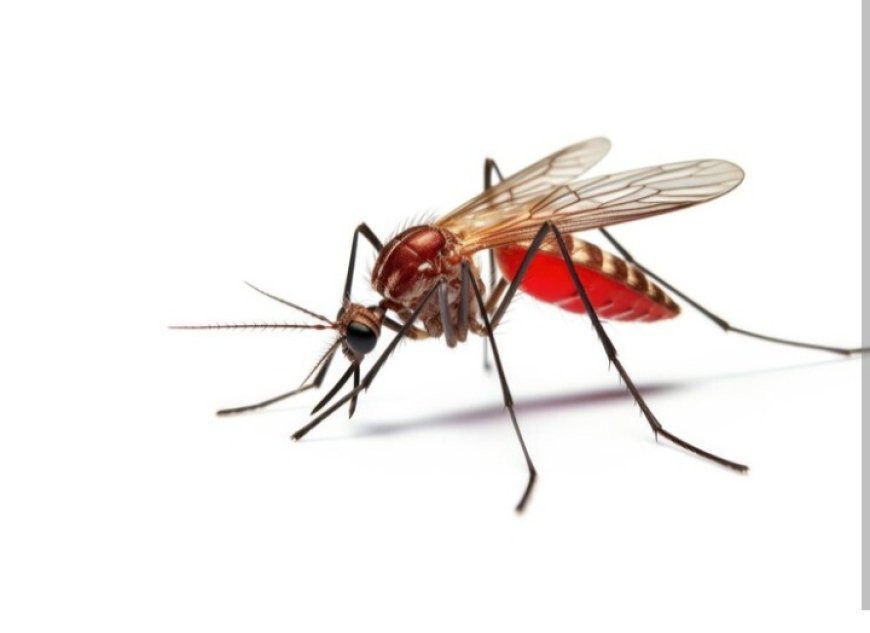Climate Change Escalates the Spread of Malaria

By Seliphar Machoni
In the battle against malaria, a new challenge has emerged, raising concerns significantly.
Efforts have been made to expand access to insecticide-treated nets and medicines to prevent malaria in young children and pregnant women. However, despite these efforts, the number of people infected continues to rise.
The transmission of malaria is heavily influenced by environmental factors. Scientists now understand that the disease is the result of a complex interaction among humans, mosquitoes, the Plasmodium parasite, and climate.
Across the globe, record-breaking climate challenges have raised concerns about the increasing risks of malaria. Mosquito-borne diseases, including malaria, are particularly sensitive to climate changes.
Increasing temperatures, changing rainfall patterns, and extreme weather events have complicated efforts to eliminate malaria.
According to Dr. Martin Muchangi, the Director of Population, Health, and Environment at AMREF, excessive rainfall and high temperatures contribute to the proliferation of malaria vectors (mosquitoes) that transmit the disease.

Dr. Martin Muchangi, the Director of Population, Health, and Environment at AMREF
"We are seeing an increase in rainfall, which creates favorable breeding conditions for malaria vectors. Higher temperatures also expedite and facilitate mosquito breeding. Global warming is responsible for these high temperatures, creating an environment conducive to mosquito breeding. Under these conditions, mosquitoes can breed even in areas where they couldn't before," explains Dr. Muchangi.
According to the World Health Organization, in 2022, there were an estimated 249 million malaria cases worldwide, surpassing the pre-pandemic level of 233 million in 2019 by 16 million cases.
The 2023 WHO malaria report highlights that changes in temperature, humidity, and rainfall can affect the behavior and survival of the Anopheles mosquito, which carries and transmits malaria. Additionally, extreme weather events, such as heatwaves and flooding, can directly impact transmission and disease burden.
For instance, in Kenya, there was an increase in malaria cases between October and December of 2023 due to Elnino.
"The changing climate poses a significant risk to malaria control efforts, particularly in vulnerable regions. It is crucial for us to implement sustainable and resilient malaria responses while taking urgent action to address global warming and mitigate its effects," says Dr. Tedros Adhanom Ghebreyesus, the Director-General of WHO.
The report also states that climate variability is expected to indirectly impact malaria trends. This will occur by reducing access to essential malaria services and disrupting the supply chain of insecticide-treated nets, medicines, and vaccines.
Additionally, climate-induced population displacement may contribute to increased malaria cases as individuals without immunity migrate to endemic areas.
Dr. Muchangi explains that the migration of people from one place to another leads to congestion, which is associated with poor hygiene that increases mosquito breeding.
"The congestion, especially in places where there is water, brings about a ripple effect. If we are not careful with our adaptation and mitigation measures, we will have a situation that affects the ecosystem," said Muchangi.
He further explains that in Kenya, the Rift Valley is becoming more prone to the spread of malaria due to the ecological zones of the Lake Victoria basin, which has led to a rise in temperatures.
"The Rift Valley is now more susceptible to malaria. Eldoret, which was once cold, is now becoming hotter, and the high temperatures are a leading environmental factor in the spread of malaria. Isiolo is also experiencing high cases of malaria transmissions due to climate change," he added.
"It is crucial to recognize the multitude of threats that impede our response efforts. Climate variability poses a substantial risk, but we must also contend with challenges such as limited healthcare access, ongoing conflicts and emergencies, the lingering effects of COVID-19 on service delivery, inadequate funding, and uneven implementations of our core malaria interventions."
"To move ahead toward a malaria-free future, we need a concentrated effort to tackle these diverse threats, fostering innovation, resource mobilization, and collaborative strategies," said Dr. Matshidiso Moet, WHO Regional Director for Africa.
What are the solutions?
To prevent a multitude of global health problems, including the potential exacerbated spread of vector-borne diseases like malaria, climate change mitigation must be addressed. The influence of both climate change and other environmental changes on vector-borne diseases is a significant threat that could be prevented with the right action.
"The added threat of climate change calls for sustainable and resilient malaria responses that align with efforts to reduce its effects. It requires multisectoral attention and collaboration to find solutions and curb the spread of malaria and climate change. Governments need to allocate more resources to malaria control in the face of climate change," said Dr Muchangi.
The World Health Organization (WHO) has developed two vaccines to address the crisis: RTS, S and R21 Matrix M. The first vaccine, RTS, S/AS01, has been successfully introduced in Ghana, Kenya, and Malawi. It has demonstrated a reduction in severe cases and a 13 percent decline in early childhood mortality rates. As for the second vaccine, R21/Matrix-M, it was approved by WHO in 2023. Its implementation is expected to significantly increase vaccine availability in areas with a high burden of malaria.







